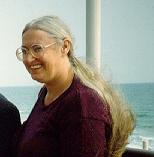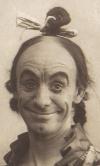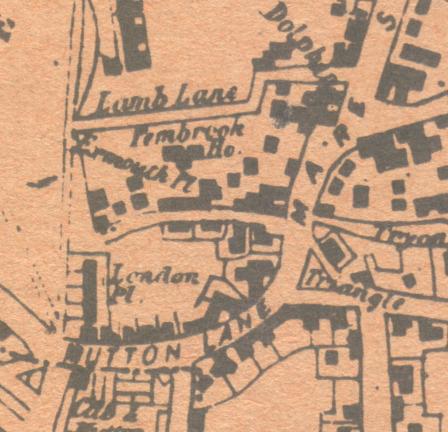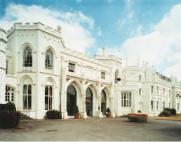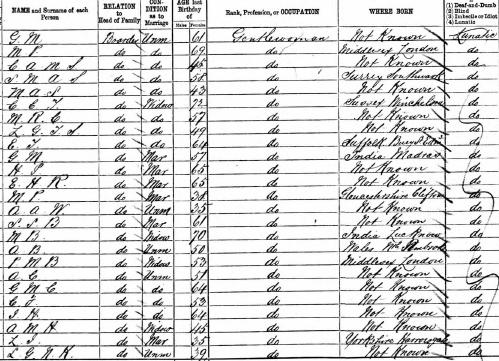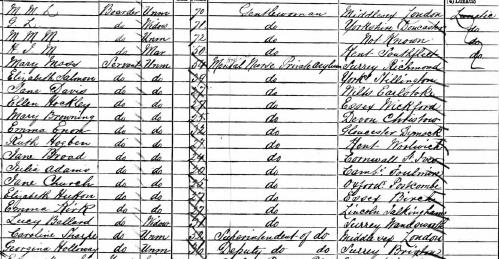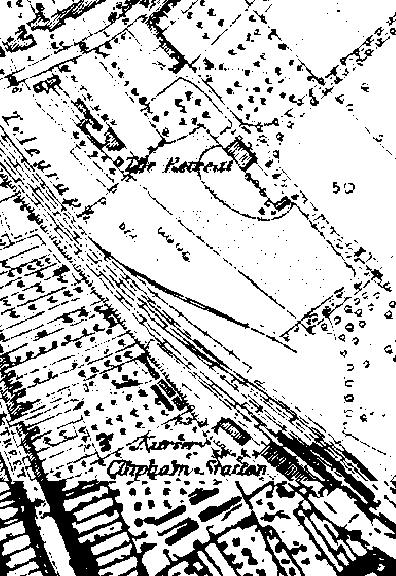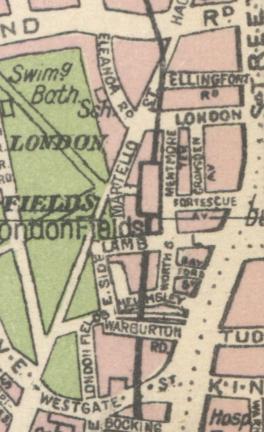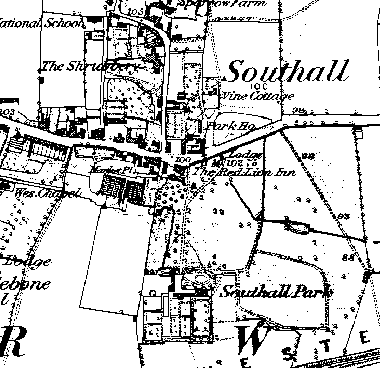
|
THE LUNACY COMMISSION,
ITS ORIGIN, EMERGENCE AND CHARACTER |



|


|
The 1832 Madhouse Act and the Metropolitan Commission in Lunacy from 1832
Describes the London body for regulating private madhouses (licensed houses) under the 1832 Madhouses Act
3.5
THE 1832 MADHOUSE ACT
Private mutilations by Peers unintentionally place the
Commission in
the
hands of a reforming Lord Chancellor
A routine bill in
extraordinary
times
Meticulous vandalism in private
3.6 THE COMMISSION'S COMPOSITION UNDER
THE 1832 MADHOUSE ACT
Lord Chancellor Brougham's
reforms
A
re-structured commission
1832
changes
1833
Changes
3.6.2 Barristers after 1832
-
3.8 CONTROLLING LONDON'S
MADHOUSES
Table one: London houses and patients 1774-1844: numbers
Table two: London houses listed with history
Table three: National distribution of licensed houses in 1844
3.9 Claims for
commission's
effectiveness
3.9.1
The commission's evaluation
3.9.2
Bethnal Green as evidence of the
commission's
effectiveness
3.9.3 London houses
improving
3.9.4
Colonel Sykes outlines the commission's
functions
3.9.5
Sykes and Ashley describe the county
visitors
3.10
Reasons for effectiveness
3.10.2 Excess
costs
3.10.3 Hampshire and the
commission compared
3.11 Limitations of
effectiveness
3.11.2
Sykes, Ashley and the London Statistical Society
3.11.3
An unnatural death rate
3.11.4
The Commission's evaluation reconsidered. Hoxton and Peckham.
3.12 Central records and national interests
3.14 The hole and corner Metropolitan Commission
3.5 THE 1832 MADHOUSE ACT
|
The chronological
bibliography for
1832
gives the details of Parliamentary proceedings. |

|
A routine bill in extraordinary times
In February 1832 Gordon, assisted by Somerset, George Lamb and Spring Rice, brought in a new Madhouse Bill. Lamb, a brother of Melbourne the Home Secretary, was also his Under Secretary of State. Spring Rice was Joint Secretary to the Treasury and had been Under Secretary at the Home Office under Lansdowne in 1827. The Bill clearly had Government support.
The 1832 Bill was a revision of the 1828 Madhouses Act in the light of a few years experience. It consolidated the 1828 Act with the 1829 Amendment Act and made detailed alterations intended to tighten and make the provisions more effective, but no major or dramatic changes. The House of Lords was to alter this.
The Madhouses Bill was brought in whilst debates on the Parliamentary Reform Bill were so engrossing the House of Commons that Wynn suggested they should set one day a week aside for other measures.
What other bills did pass that session did so by the adoption of unusual procedures which allowed them to be dealt with without detracting from the main debate. Normally bills went through their committee stage before the "whole house". That is, in the main chamber with all MPs present who wished to be but with the Chairman of Committee in the Speaker's chair. Four days after its introduction and towards the end of a late night sitting, the Madhouse Bill was referred instead to a Select Committee of 24 MPs who were to meet in the Speaker's Chamber.
The members of this committee included the Solicitor General, the Under Secretary at the Home Office (Lamb) and two recent Under Secretaries (Rice and Dawson) and the Lord Chancellor's brother. With them were the six commissioners I have already already suggested (See 3.4.5) served on this committee because of their special knowledge of the legislation. Four of these commissioners and five other members (Rice, Dawson, Fazakerley, Ord and Protheroe) had been on the 1827 Select Committee of the House of Commons on Pauper Lunatics (See list).
In this committee of specialists I assume the parliamentary work was done. If there was any discussion in the House, Hansard did not record it.
Meticulous vandalism in private
The Bill appears to have reached the House of Lords in a form
consistent
with its original presentation. The Lords referred it to a
"Private
Committee" which any
Lord could attend, but which was to meet outside the House, in
a building
called the Prince's Lodgings. (See Journal)
The quotation marks around Private Committee in the Journals
suggested to
me that this was not a recognized procedure, but how the
committee was
actually described. It was to be one whose proceedings could
not be
listened to by
outsiders, and that, of course, included those who would most
wish to: the
Bill's House of Commons sponsors.
The main House of Lords amendment (Bill 648, 1832) was to
systematically
substitute Lord Chancellor for Home
Secretary throughout. The reason can be inferred from the
care with which
they specified Lord Chancellor as "custodian of Chancery
lunatics"
(see
definitions) and
from the other amendments, which:
The effect of these changes with respect to Single Lunatics
can be seen in
the comparison of the 1828 and
1832 Acts that I have made in
3S.5.
The Lords
abolished the
Private
Register
of single lunatics (ordering destruction of
any existing Register) and allowed single lunatics to be
confined for a
year without notice.
The Chancery
Lunatics, who were the custody of the Lord
Chancellor,
were invariably rich and
Single
Houses
were expensive. The Lords' aim seems to have been to protect
the rich
and powerful from the operations of the Act. Their revisions
were not
aimed at the general improvement of the legislation, but a
meticulous
vandalism seeking to stop the general legislation imposing on
the
interests of their class.
In
the middle of the Reform Bill crisis one has visions of the
relatives of
aristocratic lunatics scurrying into the
Prince's
Lodgings
to protect for
ever their family secrets. Did they, I wonder, wear their
robes for the
occasion, or did they slip in furtively, hoping not to be
recognised?
Referring back in 1842 to previous attempts to legislate on
single
lunatics, Somerset spoke a little obliquely of the "feelings"
of
"relatives" presenting "a great difficulty". So great a
difficulty in fact
that he would not even attempt legislation on the "serious
grievances"
suffered by Single Lunatics. "What was the fact?" he asked:
The very
reason single lunatics were not sent to licensed houses was
"because they
would there be exposed to the constant visits of the
commissioners and
public authorities" (Hansard 17.3.1842 p. 802)
The Lords required of an oath of
discretion and secrecy from commissioners and county visitors
(1832 Madhouse Act
s.5), limited the
number of honorary
commissioners, and
required
two barrister commissioners (1832 Madhouse Act
section 3).
(See 3.6
below).
In the
light of the total package of Lords amendments, I suspect that
the Lords
thought commissioners dependent on the Lord Chancellor for an
income would
be more discrete than unpaid JPs and MPs and that qualified
legal
commissioners would ensure even greater discretion. They
neglected,
however, to provide salaries for the barristers and this had
to be remedied
by a special
amendment Act in
1833.
On its return to the House of Commons some amendments were
made to the
House of Lords amendments which the House of Lords accepted,
and as a
consequence the Act preserved a limited role for the Home
Secretary (*)
alongside the Lord Chancellor, but its general features
remained those of
the Bill as it left the Lords.
3.6
THE COMMISSION'S COMPOSITION UNDER
Lord Chancellor Brougham's reforms
The first appointments under
the 1832
Act
were made by Henry Brougham, Whig
Lord Chancellor from November 1830 to December 1834. There is
no reason to
believe he had any sympathy with efforts to protect the rich
from
inspection. He was intent on reform of the English legal
system,
particularly the courts, and particularly Chancery.
Brougham's
1833 Chancery
Lunatics Act
reduced the expense of the legal
proceedings to make someone a
Chancery lunatic
and introduced
inspection of the conditions they were kept in, by two
physicians from the
Chancery Visitors. Though legally a distinct organisation, at
least one of
the first Chancery Visitors
(Southey)
was a Metropolitan Commissioner.
By 1842, when
Bright
became the second Visitor, both Chancery Visitors
were Metropolitan Commissioners.
(See 5.4)
These reforms were compatible with the spirit of the 1832
amendments in one
respect: the Chancery Visitors, like the Metropolitan
Commissioners, were
responsible to the Lord Chancellor. But rather than curbing
the power of
the state to pry into the affairs of the wealthy and powerful,
they meant
that Metropolitan Commissioners, as Chancery Visitors, visited
those single
lunatics who were also Chancery lunatics.
Subsequent ministers, such as
Lord Chancellor Lyndhurst and Home Secretary Graham, saw the
possibility of
tidying up the whole situation by combining the Visitors and
the
Commissioners. But this was not to be, and an amendment to
the
1845 Lunacy
Act
undid the integration that had been achieved informally, by
preventing
professional Lunacy Commissioners from having other paid
employment.
A re-structured commission
Brougham's appointments in 1832 and 1833 made the greatest
changes to the
Commission between 1828 and 1842
(See
Chart)
In
subsequent years, until 1842, the changes that were made,
every year or
two, were only of one or two commissioners at a time: and the
balance of
"types" established by 1833 was generally maintained.
The medical commissioners, in 1832/1833, remained the same.
Not so with
the unpaid commissioners.
I have argued that
Gordon
was effectively
Chair until 1834, a backbench Tory MP
(Ashley)
was needed to balance the
Commission and
Clitherow
was the Chair of the Hanwell Asylum Committee.
The list of unpaid Commissioners appointed in 1831 was more
relevant to
1828. The commission needed re-structuring as much because of
its nominal
membership as the requirements of the
1832
Act.
Unintentionally, the appointment of barrister commissioners
opened the
possibility of establishing it on a more business like and
professional
basis - with unpaid members filling a different role to what
they had
before. The death of the first Treasurer-Clerk, was a further
factor
creating circumstances for the re-structuring of the
Commission.
Brougham was responsible for some of the changes in the
structure of the
commission - others we might more credibly ascribe to the
commissioners.
1832 changes
Brougham's influence, as distinct from the consequences of the
House of
Lord's vandalism of the
1832
Act, only
became evident in 1833. The
September 1832 changes were almost the minimum necessary to
comply with the
Act. This
(3S.2.1
+
3S.2.2)
required the 23 serving commissioners to be
reduced to 20 or less, and the appointment of two barristers.
Four of five
physicians had to be appointed, so the reduction had to be of
the unpaid
commissioners.
The
commission was thus reduced to 19 - only one less than the
maximum.
The six unpaid commissioners not re-appointed were
Calthorpe,
Dowedswell,
Perceval,
Somerset,
Freemantle
and
Rose.
Calthorpe, Dowedswell and Perceval had ceased being MPs.
Somerset,
Freemantle and Rose probably considered their task on the
commission
completed with the 1832 Madhouses Act. Somerset and
Freemantle were two of
the three Tory party organisers who had kept the commission
going.
(See
Peel's commissioners).
The third, Ross, ceased being a commissioner
in 1833.
G.H.Rose (aged 61) was one of the two older commissioners,
with
special knowledege of the legislation, whose role on the
commission was
probably closely related to the need to evaluate and revise
the
1828
Act
(See 3.4.5). The other, Wynn (aged 59), ceased being a
commissioner in
1833.
1833 Changes
The affairs of the Commission in the winter of 1832/1833 were
in a mess.
Their Treasurer Clerk, who provided their offices, died and
they appear to
have been without a clerk or office from November 1832 to
February 1833.
(See move to
John
Street). The new clerk had to get
the finances into order,
including recovering
licence fees from the previous clerk's estate (see clerk's
finances).
Accounts for two years were published in August 1833. Until
August 1833 it
was also unlawful to pay the new barrister commissioners
appointed under
the 1832 Madhouses Act. Robert Gordon may have been
the chair at this time. In which
case, his
later record suggests that he would have helped with the
practical affairs
of the Commisssion. Lord Ashley had not yet undergone the
religious
renewal
that preceded his earnest application to social
responsibilities. Several
of the unpaid commissioners listed, before the
Commission was reappointed in September 1833, may have been
Commissioners
in name only.
About February 1833, Brougham appointed
Edward Du
Bois
as Treasurer-Clerk in
place of
Robert
Browne
(deceased). Dubois was the assistant judge at the
Middlesex Court of Requests (County Court). For the next
twelve years he
combined these posts.
A bill was introduced into Parliament that included provision
for paying
the two barrister commissioners. Although the
surviving
Accounts
of the Commission do not allow us to tell when
Mylne and Procter were first paid, the
Act making it
lawful
became law on 28.8.1833.
With professional legal commissioners,
a large pool of unpaid commissioners was no longer needed to
make
visiting possible
(3.6.2).
Also, as the commission was no longer experimental, MPs on the
Commission
no longer had the significance they had when it was intended
to legislate
on the basis of the first few year's experience.
Under these circumstances the number of unpaid commissioners,
and the
proportion of MPs, was reduced in the September 1833
appointments to even
fewer than the Act allowed. At the same time, the first new
unpaid
appointments for three years were made. Five replaced seven,
so the
commission was further reduced to 17. In 1830 the ratio of
unpaid to
professional commissioners had been 19:5; it was now 10:7.
Treasurer-Clerk:
His Assistant clerk (?):
Legal commissioners:
Medical commissioners:
MP honorary commissioners:
Other honorary commissioners:
The most notable differences from the 1828 Commission were the
reduction of
unpaid commissioners and even more marked reduction in the
proportion of
MPs. Eleven of the 13 commissioners removed in 1832 and 1833
were MPs, and
only Inglis and Grey replaced them. On the other hand, the
three retiring
Middlesex JPs (Byng MP, Bouverie MP and Hampson) and the Rev.
Campbell,
were replaced by Acklom, Halswell and Clive.
3.6.2 BARRISTERS AFTER 1832
As we have no visiting records after 1831, we must infer from
other data
the extent to which legal visitors replaced unpaid
commissioners under
the
1832
Madhouses
Act.
We can do this with data on the commissioners fees and days
visiting, produced in 1842 for the period 1836-1841 (See table of professional
commissioners
fees)
Before 1832 at least one unpaid commissioner and two medical
commissioners visited
(3.4.2). If visits after the
1832 Act were
made by a
(paid) lawyer in the place of an unpaid commissioner we might
infer that
the annual legal fees would be roughly half the medical fees.
In fact they
were 40% in 1836/1837, rising to 50% in 1840/1841.
My suspicion would be that, after 1832/1833, two medical and
one legal
commissioner would be the general rule for visiting, but that
unpaid
commissioners would provide an extra visitor for visits to
pauper or
problem
houses. There was more than one unpaid commissioner on just
under half
the visits before 1832, and these visits were usually ones to
pauper or
problem houses.
(3.4.2)
The reason that legal fees were not 50% of medical fees before
1840/1841
probably relates to the provisions for Release Inquiry and the
number of
medical commissioners (5) in relation to the legal
commissioners (2).
Release inquiry visits required two doctors, or three doctors
if no legal
or unpaid commissioner went
(3S.4.4 (2)
QUORUM).
Three visits had to be
made and, until 1845, a meeting of the Board held to decide if
the release
should take place.
(3S.4.4
(1)). The
case of "R.P." in 1838 involved a
three day board sitting for five hours a day with ten
commissioners present
(6BIOH4
3.10.1838)
If five of these commissioners were doctors they would
have cost £75 for the Board alone (compared to £30
for the
lawyers) - in
addition to the preceding medical examinations of him. The
R.P. case was
presumably responsible for the dramatic increase in medical
fees in
1838/1839
(3.6.2TA).
The way in
which the fees for doctors rise and then
fall at the period of the R.P. inquiry can be compared to the
relatively
steady rise in the fees paid to lawyers. My explanation of
this would be
that the lawyers were increasingly absorbed in the
administration of the
office.
DAYS: "The number of days each has been employed in the
execution of their
duties". The professional commissioners were paid £1 an
hour. It is
clear
from the ratios of days to fees above that the "days" are not
of equal
hours. The figures are, presumably, the days in the year a
commissioner
was employed, irrespective of how many hours he worked.
3.8
CONTROLLING LONDON'S MADHOUSES
The commission's major function until
1842 was the control of London's
madhouses. It licensed from 30 to 40 houses.
In 1840, Commissioner
Sykes told
the
Statistical Society of London:
The numbers from year to
year are shown in table
one. Table
two
lists the houses and provides a history of each.
A few (all pauper houses) were large asylums of over 100
lunatics. Except
for the new
Peckham House
these were all in
Bethnal
Green
and Hoxton in
1828. After about 1840 smaller houses did not take paupers.
(See
house xii on
Sykes' list)
The size of non-pauper houses ranged from
Pembroke
House, Hackney
with 95 lunatics in 1844 to a number of houses with only two.
The smallest houses were ordinary dwellings where two or three
certified
lunatics lived in the care of the householder.
It was variations like this in the smaller houses that
accounted for much of the variation in the total number of
houses shown in
table one.
If we discount houses with less than ten lunatics and count as
one those
where the same owner kept men and women in separate houses,
the number of
London houses in 1829 was around 24. Namely:
Bethnal
Green
(usually counted as two houses),
Hoxton House,
Holly
House (closed
1837), Peckham
House,
Pembroke
House,
Finch's Houses,
Northumberland
House,
Whitmore
House,
Cowper
House,
Brooke
House,
Sutherland's
Houses,
Stillwell's Houses,
Normand
House,
Western
House,
Clapham
Retreat,
Althorpe
House,
Ayres' and
Oxley's,
Mary
Bradbury's,
Gloucester
House
(closed
by 1844),
Plaistow
(licence
revoked 1829),
Sleaford
House
(closed probably between 1839 and 1844),
Surrey
House (closed
probably between 1839 and 1844),
Hope House
(closed by 1844)
In the same category, six new ones
opened.
A number of the established houses also changed
premises or underwent major structural alterations. (See table
two)
which is not always the same as the number of licences
3.8.TA2 LONDON HOUSES LISTED WITH HISTORY
B. NON-PAUPER HOUSES 1828 - 1844 with 10
or more
LUNATICS
The number of lunatics is the number in 1844 unless otherwise
stated
Most information taken from
Valerie
Argent's
(handwritten) record book,
which she compiled from printed and manuscript records
including the
following lists:
When the table says something like "Opened by 1815, closed by
1874" it can
be inferred that the house is shown on the 1815 list, but not
on the 1874
list.
A. PAUPER HOUSES 1828 - 1858
Warburton's Bethnal Green. (East London)
Thomas Warburton bought the Bethnal Green business from
Stratton's
executers
on 28.9.1800. Warburton was already the proprietor of
Whitmore
House,
Hoxton,
about a mile away. According to the accounts of how he
acquired the Hoxton
business, he lived there for some time. Elaine Murphy says that he [then]
lived in Mare
Street, Hackney [Probably at Exmouth Place from 1801,
see below],
and was a
member of the Select Vestry and a Trustee of the Poor from
1812 to
1815. He
was disqualified from
serving as a Trustee in 1823 because his attendance was
infrequent.
He continued to serve on one of Hackney's almshouse charities,
She says
that
Warburton Road and Warburton
Flats are named
after him
(See 1950s map). In 1830,
Exmouth
Place
seems to have been about the position of Warburton Road, and
Exmouth Place
is mentioned in Thomas Warburton's will (see margin below
under Sarah
Marsh). [I will call this "Thomas Warburton's Mare Street
home"] From
an 1847 map it can be seen to back on to Pembroke
House
British History
Online: "A house which Thomas held from 1801 in
Mare Street
was to be
demolished in 1847 and was commemorated in Warburton
Road.
(References: Morris, Hoxton Madhos; GLRO M79/KH/10, pp. 57-8
(plan); ibid.
12, pp. 50-3, 83, 86-7, 119-22; above, Mare Street and London
Fields)
THE 1832 MADHOUSE ACT
The Metropolitan Commission in
September
1833,
(including its Clerk and an assistant)
consisted of:
Edward
Dubois
Robert
Masters
(?)
James Williams
Mylne
Bryan Waller
Procter.
Turner,
Bright,
Hume,
Southey
E.J.
Seymour
Lord
Ashley
(Chair from about 1834)
Robert
Gordon
Robert Vernon Smith
(appointed 1830)
R.A.
Inglis
(new)
George Grey (new)
Clitherow
(Chair of
Hanwell
Visitors)
George Acklom
(another JP on the Hanwell Committee)
(new)
E.S. Halswell
(also a Middlesex magistrate) (new)
Reverend George Shepherd
(appointed 1830)
George Clive
(new)
TA 3.6.2 Professional commissioners' fees and days worked
1836-1841
Based on a return moved for by Granville Somerset. Printed
3.2.1842.
(Accounts and Papers 1842. Vol 34, pages 3 following)
1836/7
1837/8
1838/9
1839/40
1840/41
MYLNE
£246
49 days
£272
49 days
£304
56 days
£310
54 days
£333
54 days
PROCTER
£241
47 days
£276
49 days
£305
58 days
£317
54 days
£316
52 days
BOTH
LAWYERS
£487
96 days
£548
98 days
£609
114 days
£627
108 days
£649
106 days
TURNER
£254
54 days
£267
53 days
£391
74 days
£297
55 days
£302
55 days
BRIGHT
£261
47 days
£279
53 days
£353
65 days
£302
54 days
£295
54 days
SOUTHEY
£239
48 days
£271
51 days
£349
67 days
£299
54 days
£309
49 days
HUME
£251
50 days
£273
53 days
£339
62 days
£323
55 days
£336
59 days
SEYMOUR
£168
37 days
£106
23 days
£110
24 days
HEWETT
£73
14 days
£51
10 days
ALL
DOCTORS
£1,173
236 days
£1,196
233 days
£1,542
292 days
£1,294
232 days
£1,293
227 days
DOCTORS +
LAWYERS
£1,660
332 days
£1,744
331 days
£2,151
406 days
£1,921
340 days
£1,942
333 days
FEES: "Sums to each commissioner". Comparison with available
Commission
accounts shows that the figures given are for fees exclusive
of expenses.
"Forty-two asylums have been under the supervision
of the
commission since its first establishment. Some slight changes
have taken
place, in the abandonment of two or three establishments, and
the addition
of others. The number in existence on the 30th of May 1839 was
34, the
number of patients in which varied from 2 to above 300"
Sykes 1840
p.147
At Turnham Green
Terrace, Turnham Green, for example, John and Mary
Jackson took
in James Poynder on 3.3.1818
and four years later found room for William Hill. The same two
men were
living with them and a man and woman servant in 1841, and
"Jackson's
Lunatic Asylum" continued until the late 1840s.
Thomas
Warburton, *White
Houses
and *Bethnal House, Bethnal Green -
*Banks Farrand, trustee
for Sir
Johnathan Miles at Hoxton -
*George William
Burrow,
Hoxton -
Peckham
House (opened 1826?) -
*George Rees MD,
Hackney -
*Jane Jones, King's Road,
Chelsea -
Northumberland
House (opened 1822?) -
*Thomas Warburton,
Whitmore House,
Hoxton -
Cowper
House (opened
1828?) -
*Thomas Monro, MD,
Brooke House,
Clapton -
*Jess
Annandale, Lower
Street, Islington -
*John Adams, Wells Row, Islington (10 or less) -
*Mary Bastable,
Blacklands,
Chelsea -
Stilwell Houses -
*Edward Talfourd,
Walham
Green -
Western
House -
Clapham
Retreat
(opened 1823) -
Althorpe
House -
*Peter Gilles
Bland,
Kensington Gore -
*Samuel Fox,
London Lane,
Hackney -
*William Bignall, Kingsland Road (10 or less) -
Mary
Bradbury's,
*James Pell,
Weston Place,
Somers Town -
*Stephen Casey,
Plaistow,
Essex (10 or less in 1815) -
Sleaford
House -
Surrey
House -
Hope House
-
*William Moyses, Lower
Road,
Tooting -
*Richard Holt, Lewisham, Kent (10 or less) -
*William Langdon,
Prospect Place,
Paddington (10 or less) -
*John Pile, Somers Place, New Road (10 or less) -
*Elizabeth Radford, Little Chelsea (10 or less) -
*Robert Salmon, Beaufort Row, Chelsea (10 or less) -
*Elias Tardy, Four-tree Hill, Enfield
HOUSES
LUNATICS
Number of houses
licensed -
All the figures I have given for lunatics were said to be the
numbers in
the houses on a specific day. These may differ from figures
given in other
sources which may be the total number in the houses during a
year, or the
total number for which the houses were licensed.
Total
non-pauper
pauper
sources
1774
16
Parry-Jones, W.L. 1972, table page 30, quoting
RCP Commission
Account
and
1807
SCHC
1807
17
1815
24
7.6.1815 List
Between (about) 1813 and 1828 the Physician Commission issued
three to six
licences to each large pauper house. As a consequence, 24
houses had 34
licences in 1815. (24 houses includes the White House and
Bethnal House as
separate houses). This table uses the numbers for houses (not
licences)
throughout.
1828
38
2,047
871
1,176
1829
Report
patient numbers for 31.7.1828
The 1829 Report says that the Commissioners had revoked one
licence, and
discontinued another, with approval of the Home Secretary. The
licence
revoked was in Plaistow, Essex. Its thirty three patients were
all
discharged in three days at the end of May, beginning of June,
1829.
(
1829/1830 Lists)
1829
2,048
868
1,180
1829
Report
patient numbers for 1.5.1829
1830
1831
1832
37
1833
1834
38
1,435
802
633
Sykes
1840
1834-1835: three small houses closed
1835
35
1,465
836
629
Sykes
1840
1835-1836 One house closed, two new opened
1836
36
1,564
828
736
Sykes
1840
1836-1837: Four houses closed
1837
32
1,692
874
818
Sykes
1840
1837-1838 Two new houses opened
1838
34
1,656
819
837
Sykes
1840
1839
36
1,758
902
856
Sykes
1840
1840
38
1,713
878
835
Sykes
1840
1841
33
1842
1843
1844
39
1,827
973
854
1844 Report
A. PAUPER HOUSES 1828 -
1858
arranged in the order of their opening
in order of numbers of lunatics they contained
1. Houses open in 1828 and 1844
2. Houses open in 1829 closed by
1844
3. Houses opened between 1831 and
1843
Richard
Powell's 7.6.1815 List
Metropolitan
Commissioners' 1829/1830 Lists (HO 44/51)
Metropolitan
Commissioners' 21.3.1831 List
Metropolitan
Commissioners' 1.1.1844 Lists
Lunacy
Commissioners'
30.6.1846 List
Lunacy
Commissioners'
1.1.1859 List
Lunacy Commissioners' 1.1.1874
List
The Bethnal Green Asylum, Bethnal House and
many other
names.
Situated on Cambridge Heath Road (south side) near the
junction of
Bethnal Green Road and the present site of Bethnal Green
Underground. An
asylum from 1727 to 1920.
The Elizabethan Bethnal House (Kirby Castle or the Blind
Beggar's House)
faced west onto the green at Bethnal Green. In 1727 it was
leased to
Matthew Wright and used as a private madhouse. In 1754 it
belonged to
Elianor Wright (his widow), then George Potter (1755-1780) and
Christopher
Potter (1772-1780). James Stratton may have run the madhouse
business from
before 1770.
 Citation: see
referencing
suggestion
Citation: see
referencing
suggestion
Click for:
Grove House, Stoke Newington Green
Northumberland House, Stoke Newington
